Aging is a complex process that encompasses various biological mechanisms. One of these mechanisms involves changes in the epigenome, particularly DNA methylation.
DNA methylation is a biochemical process that adds a methyl group to the DNA molecule. This process is essential for normal development and is associated with several key functions including gene expression regulation, embryonic development, and genomic imprinting.
As individuals age, methylation patterns in their genome can change. These changes lead to alterations in gene expression that may contribute to the aging process and the development of age-related diseases.
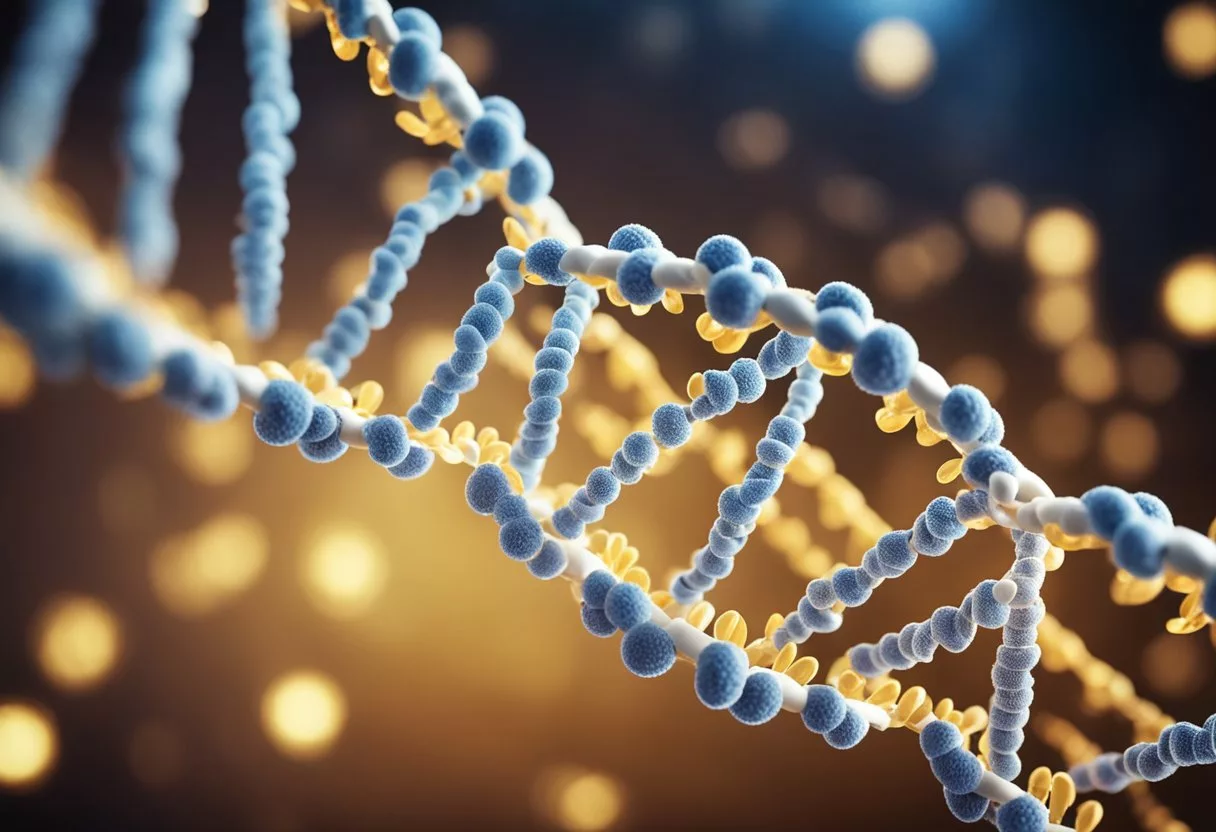
The study of methylation in relation to aging has paved the way for the concept of the epigenetic clock. The epigenetic clock is a promising biomarker for biological age that may provide insights beyond chronological age.
By comparing methylation patterns at specific parts of the genome, it is possible to predict an individual’s biological age. Sometimes, this biological age differs from their actual age in years.
The understanding of how methylation correlates with aging also enlightens us on the potential for interventions that could modify methylation patterns with the aim of promoting healthy aging and potentially altering the course of age-related diseases.
Key Takeaways
- DNA methylation is a critical epigenetic mechanism that influences gene expression and changes with age.
- The epigenetic clock, based on methylation patterns, serves as an indicator of biological age and the aging process.
- Ongoing research aims to uncover interventions that can impact methylation patterns to promote healthier aging and combat age-related diseases.
Fundamentals of DNA Methylation
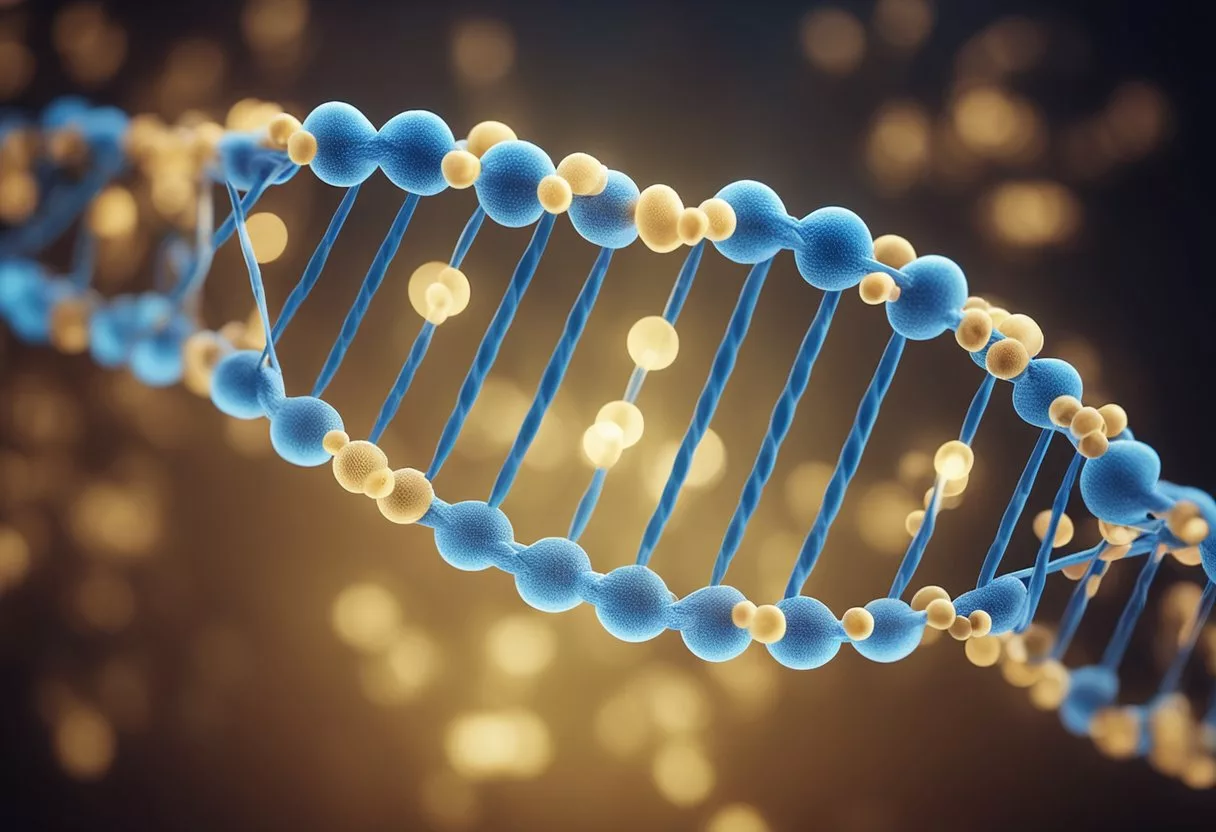
DNA methylation is a crucial epigenetic mechanism with implications for gene regulation and the stability of the genome. Understanding this process is key to deciphering its role in development, aging, and disease.
The Role of CpG Sites and Islands
CpG sites are regions of DNA where a cytosine nucleotide is followed by a guanine nucleotide in the linear sequence of bases. These sites frequently undergo methylation, which involves the addition of a methyl group to the cytosine ring, resulting in 5-methylcytosine.
CpG islands are dense clusters of CpG sites often located at gene promoters. These islands are typically not methylated, which keeps the associated genes active for transcription.
DNA Methyltransferases and Their Function
DNA methyltransferases (DNMTs) are enzymes responsible for transferring methyl groups to DNA. The main types of DNMTs include DNMT1, DNMT3A, and DNMT3B.
DNMT1 is primarily involved in maintaining methylation patterns following DNA replication, while DNMT3A and DNMT3B are known for de novo methylation, establishing new methylation patterns during cell development.
Methylome: Comprehensive Methylation Landscape
The methylome is the complete set of methylation modifications across the genome of a cell. It contains information that reflects a cell’s history and the potential for changes in gene expression.
The study of the methylome reveals patterns that correlate with age, environmental factors, and disease states. This helps us understand the intricate roles of methylation in cellular development and aging.
Aging and the Epigenetic Clock
The “Epigenetic Clock” is a predictive tool indicating the rate of biological aging, which may differ from one’s chronological age. This concept has become central to understanding the molecular mechanisms underpinning the aging process and the potential for intervention to modify healthspan.

Understanding the Epigenetic Clock
The Epigenetic Clock is a mathematical model that uses the DNA methylation state of specific genomic sites to estimate the biological age of a tissue, cell, or organism.
Steve Horvath developed a widely recognized version known as the Horvath Clock. This clock highlights the relationship between chronological age and methylation patterns at over 350 sites on the DNA.
Methylation patterns change predictably as individuals age, thus allowing scientists to use these epigenetic biomarkers as a gauge for biological aging rates.
Epigenetic Age Acceleration
Epigenetic Age Acceleration occurs when an individual’s biological age, as indicated by biomarkers like DNA methylation, exceeds their chronological age. It implies a faster than expected aging process.
Factors that can influence epigenetic age acceleration include genetic factors, lifestyle, environmental exposures, and diseases.
Biomarkers of Aging
Biomarkers of Aging are quantifiable biological parameters that indicate the state of aging at a cellular or organismal level. Epigenetic alterations, specifically DNA methylation, have emerged as reliable biomarkers, reflecting the complex interplay between genetic predispositions and environmental exposures.
By assessing these epigenetic biomarkers, researchers gain a clearer picture of the biological aging rates. This is essential for developing therapeutic strategies aimed at extending healthspan.
Methylation Patterns and Age-Related Changes

DNA methylation serves as a key player in the regulation of gene expression, and its patterns change significantly with age. These changes are implicated in various biological processes and are closely associated with age-related diseases and senescence.
DNA Methylation Patterns Over the Lifespan
At conception, the human genome experiences a near-complete demethylation, followed by a wave of remethylation. As individuals progress from infancy through adulthood into old age, their DNA methylation patterns exhibit consistent changes.
Studies have identified age-related changes in DNA methylation which serve as the foundation for developing epigenetic clocks, a compelling tool for estimating biological age.
Hypermethylation and Hypomethylation in Aging
Hypermethylation, commonly observed at CpG islands within gene promoters, is often associated with gene silencing. This phenomenon tends to increase with age and is linked with the repression of genes involved in cell cycle regulation and growth.
On the other hand, DNA Hypomethylation generally occurs in repetitive sequences and can lead to chromosomal instability. Both hypermethylation and hypomethylation contribute to the progression of age-related diseases.
Epigenetic Drift
Epigenetic drift refers to the divergence of DNA methylation patterns as one ages, reflecting both environmental influences and intrinsic cellular changes.
This drift can manifest as variations in methylation status of symmetrical CpG pairs and results in inter-individual epigenetic variability. These epigenetic alterations are a significant marker of mortality risk and can serve as predictors of life span and health span among older individuals.
Methylation and its Implications on Human Health

Methylation is a crucial epigenetic mechanism that regulates gene expression and influences human health. Alterations in DNA methylation patterns have been associated with various age-related diseases, spanning cancer to neurodegenerative conditions, and are affected by a range of environmental factors.
Cancer and Methylation
Abnormal methylation patterns are a hallmark in the development and progression of cancer. Hypermethylation of tumor suppressor genes often leads to their silencing, which can contribute to unchecked cellular proliferation. Conversely, hypomethylation may result in the activation of oncogenes.
For instance, MLH1, a gene involved in DNA repair, might become hypermethylated and silenced, which is a recognized mechanism in colorectal cancers. This review on DNA methylation and healthy human aging discusses how epigenetic alterations correlate with cancer incidence.
Cardiovascular Diseases and Epigenetic Regulation
In cardiovascular health, DNA methylation modifications can affect the expression of genes associated with atherosclerosis, hypertension, and heart failure. Epigenetic regulation plays a role in endothelial function and can influence the development of cardiovascular disease over a person’s lifetime.
Research has linked environmental factors with alterations in DNA methylation that may impact heart disease risk, emphasizing the interconnectedness of epigenetic mechanisms and cardiovascular health.
Neurodegeneration, Alzheimer’s Disease and Epigenetic Alterations
Neurodegenerative diseases, notably Alzheimer’s disease, are associated with distinct epigenetic changes. Methylation patterns in neuronal DNA change with age and can contribute to the pathology of Alzheimer’s disease.
Studies indicate that the dysregulation of methylation processes can lead to alterations in gene expression crucial for neuron function and maintenance. The relationship between DNA methylation and Alzheimer’s is a growing area of interest, as seen in this article about epigenetic regulation of aging.
Environmental Influences on Methylation
The environment has significant bearings on DNA methylation. Lifestyle factors such as diet, exercise, smoking, and air pollution have been shown to affect epigenetic marks.
For example, obesity can lead to methylation changes that may predispose individuals to diseases like diabetes, early onset of cardiovascular conditions, and cancer, which could shorten lifespan and affect longevity.
Hallmarks of Aging and Methylation

Aging is marked by a collection of biological changes, among which epigenetic alterations like DNA methylation play a significant role. This section delves into how methylation intersects with the key aspects of aging, particularly focusing on cellular senescence, telomere shortening, and stem cell exhaustion, and their contribution to aging and longevity.
Cellular Senescence and Chromatin Changes
Cellular senescence refers to the irreversible arrest of cell division. This often happens as a defense mechanism against malignant transformation. This process entails significant alterations in chromatin, the complex of DNA and protein found in cells.
Chromatin changes contribute to senescence by remodeling the epigenetic landscape. They do this notably through methylation patterns. These patterns can either promote or suppress the expression of genes associated with aging and age-related pathologies. Researchers have highlighted the role of an age-associated global hypomethylation, impacting factors that sustain cellular health and functionality.
Telomere Shortening and Methylation
Telomeres, the protective caps at the ends of chromosomes, naturally shorten with each cell division. As telomeres shorten, cells enter senescence to avoid genomic instability.
Methylation has a dual role in this aspect of aging. While it can protect telomeres from damage, abnormal methylation patterns can accelerate telomere shortening.
Alterations in methylation at telomeres and subtelomeric regions are a hallmark of aging. They have implications for both tissue homeostasis and the onset of age-related diseases.
Stem Cell Exhaustion and Epigenetic Factors
Stem cells are vital for tissue homeostasis and regeneration throughout an organism’s life. Over time, stem cell exhaustion diminishes the regenerative potential of tissues and organs.
Epigenetic factors, including DNA methylation, influence stem cell function and exhaustion. These epigenetic changes impact the cells’ ability to replicate and repair tissue. As a result, they influence healthy aging and longevity. Methylation changes are implicated in restricting the proliferative capacity of stem cells. This contributes to the aging process and limits the regenerative responses crucial for staving off age-related pathologies.
Modifiers of Methylation
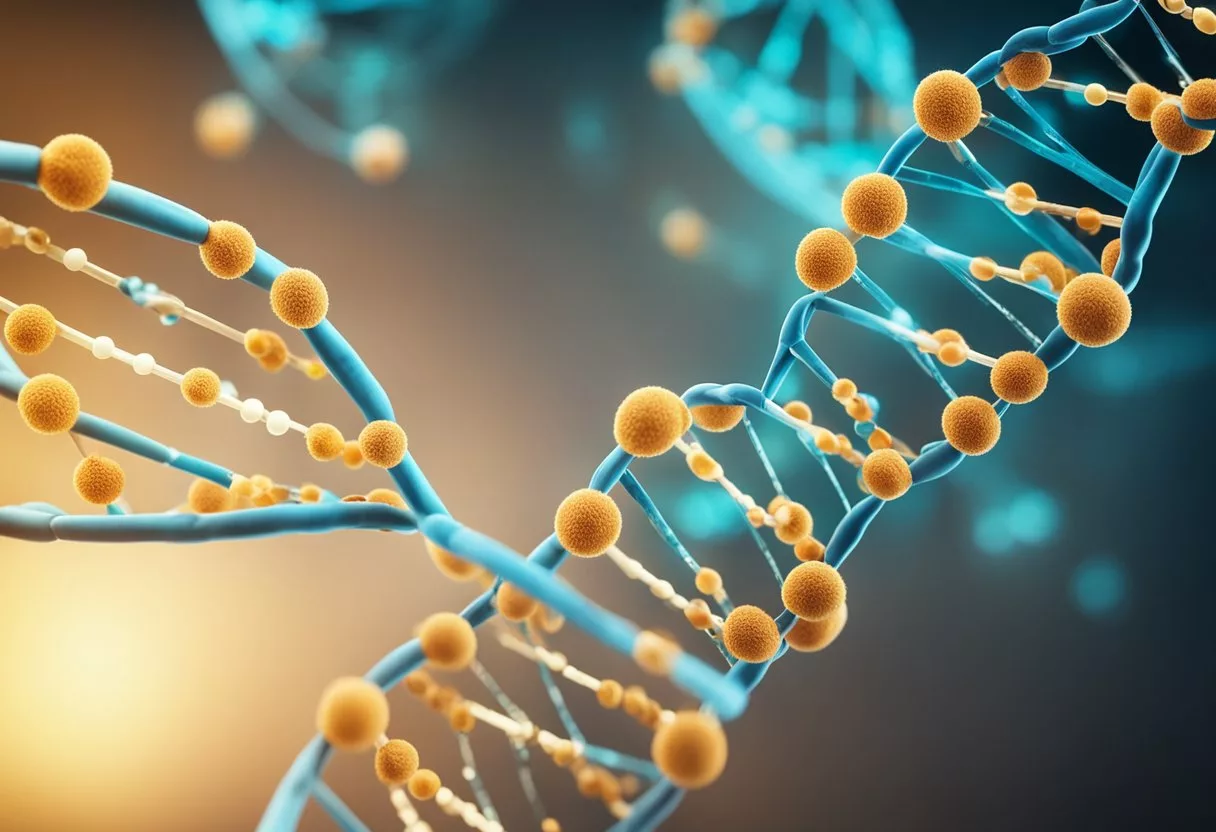
DNA methylation patterns are influenced by a complex mix of dietary, lifestyle, and pharmacological factors. They are also influenced by the intricate web of genetic and epigenetic interactions.
Understanding how these elements affect methylation can help in developing targeted anti-aging interventions and precision health strategies.
Diet and Lifestyle
Caloric Restriction and Exercise are two lifestyle choices with significant effects on DNA methylation.
Studies suggest that Caloric Restriction can lead to beneficial epigenetic modifications, potentially delaying the aging process.
Regular Exercise has also been associated with favorable DNA methylation profile changes, highlighting its role in healthy aging. These modifications hinge on the premise that lifestyle interventions can act as natural epigenetic modulators. They can potentially mitigate age-related diseases like Type 2 Diabetes.
Pharmacological Interventions
Several drugs, including Rapamycin, have been identified as potent modulators of methylation with implications for aging and disease.
Rapamycin Treatment is notable for its role in promoting longevity. This is possibly by altering methylation pathways that affect aging. This pharmacological intervention has shown promise in extending the lifespan of animals with traits like Dwarfism. It could also play a part in precision health approaches to human aging.
Genetic and Epigenetic Interplay
Monozygotic Twins have provided critical insights into the genetic and epigenetic factors influencing methylation.
Despite having identical DNA, monozygotic twins exhibit differences in methylation patterns as they age. This suggests that environmental and stochastic factors significantly impact DNA methylation. Understanding this interplay is paramount in developing Anti-Aging Interventions that leverage Epigenetic Modifications for improved health outcomes.
Molecular Mechanisms of Methylation and Demethylation
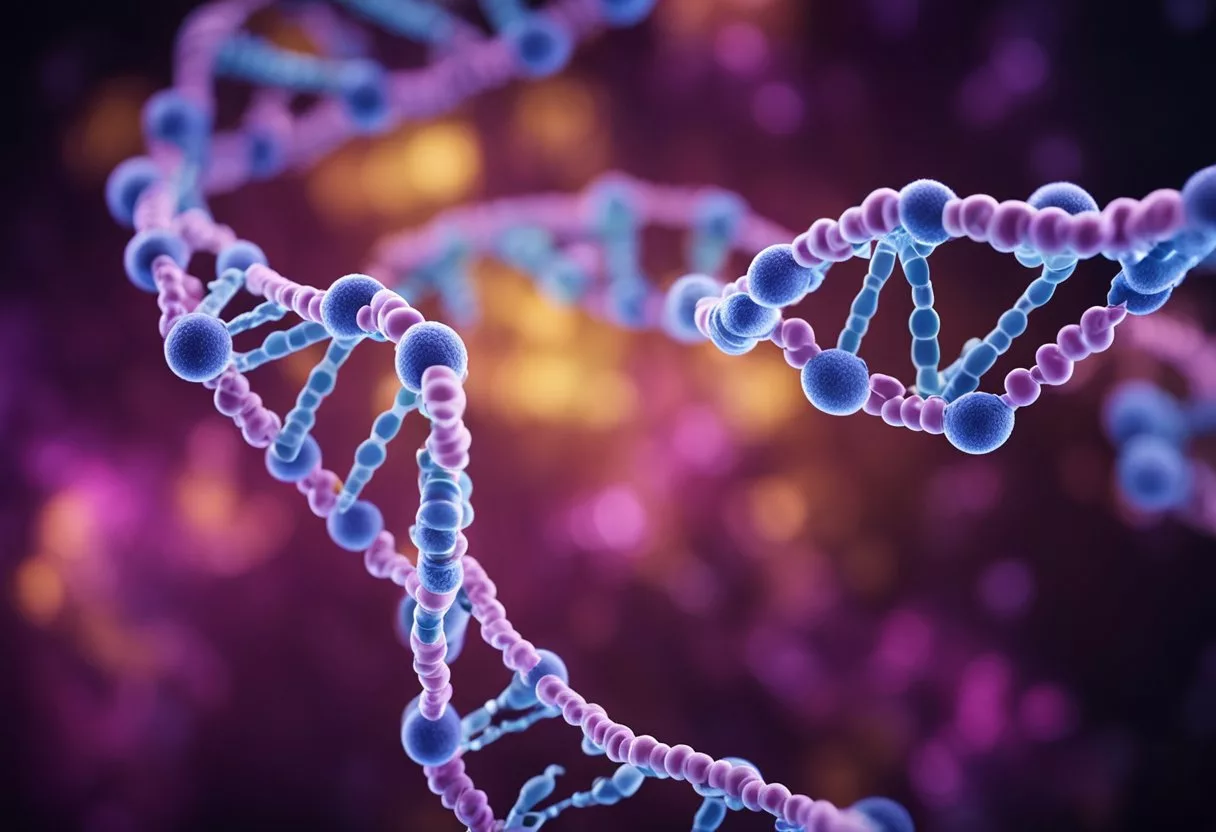
Methylation and demethylation are critical processes in the regulation of gene expression. They have direct implications for aging and age-related diseases.
Active DNA Demethylation Process
Active DNA Demethylation is an essential biological process that entails the removal of methyl groups from DNA, primarily at 5-methylcytosine (5mC) sites.
This demethylation is a multi-step pathway that involves enzymes like the ten-eleven translocation (TET) family proteins.
TET enzymes convert 5mC to 5-Hydroxymethylcytosine (5hmC), then to 5-Formylcytosine (5fC), and finally to 5-Carboxylcytosine (5caC).
Another enzyme, thymine DNA glycosylase (TDG), then excises the 5fC and 5caC. This allows the DNA base excision repair (BER) mechanism to restore an unmethylated cytosine.
Role of Hydroxymethylcytosine in Aging
5-Hydroxymethylcytosine not only serves as an intermediary in the active demethylation process but also as an epigenetic mark on its own.
Alterations in the levels of 5hmC are observed during the aging process. Here, they may play a role in the epigenetic clocks used to predict biological age.
This modified base is recognized by different cellular proteins and can influence the regulation of gene activity. As a result, it can potentially contribute to age acceleration phenomena.
Mechanisms of DNA Methylation Maintenance
DNA methylation maintenance is crucial for preserving epigenetic information during cell division and throughout an organism’s life.
The primary enzyme responsible for this is DNA methyltransferase 1 (DNMT1). This enzyme reliably copies methylation patterns from parental to daughter strands during DNA replication.
This conservation of methylation patterns is pivotal to maintaining cellular identity and function. Alteration of these mechanisms can lead to improper methylation states that are often associated with aging and various diseases.
Comparative Epigenetics Across Species and Lifespan

Epigenetic mechanisms, particularly DNA methylation, are key factors in understanding aging across various species. This comparative approach sheds light on conserved patterns of gene expression that may contribute to lifespan differences. It also helps identify epigenetic markers with potential links to longevity.
Epigenetic Patterns in Different Organisms
In mammals, epigenetic patterns serve as regulators of gene expression across different types of tissues, such as skeletal muscle and the immune system.
For instance, studies on universal DNA methylation age suggest that organisms share common methylation signatures despite species-specific variations.
The epigenetic landscape of aging also reflects tissue-specific methylation patterns. This hints at a complex regulatory network that governs cellular aging.
Conserved Methylation Markers and Longevity
In the quest to understand aging, researchers have identified conserved methylation markers linked to longevity.
Epigenetic clocks, reliant on the methylation levels of specific genome regions, reveal that aging encompasses more than just random biological deterioration. Instead, there are evolutionarily conserved markers across species that play a pivotal role in lifespan determination.
The presence of certain methylation profiles in tissues like skeletal muscle can act as indicators of biological age.
Variability in Methylation Among Populations
The methylation state can exhibit significant variability among different populations of a species. This contributes to the diversity within the epigenetic landscape.
Environmental factors, lifestyle, and genetic predisposition greatly influence the epigenetic mechanisms. These variations account for differences not only within a population but also in an individual’s immune system response and adaptation to external stresses. As a result, they provide a mosaic of aging pathways.
Technologies and Future Directions in Methylation Research

Recent advancements are paving the way for comprehensive understanding and novel treatments relating to methylation and aging. Targeted technologies and the anticipation of personalized medicine are particularly promising areas in this field.
Genome-Wide Methylation Assays
Genome-wide methylation assays are crucial for analyzing DNA methylation patterns across the entire genome.
These assays, such as the Illumina Infinium MethylationEPIC BeadChip, have revolutionized the ability to assess genome-wide DNA methylation changes. They enable the study of methylation at over 850,000 CpG sites.
Through these assays, researchers can examine the role of gene promoters, repetitive elements, and Alu elements in aging and associated diseases such as osteoarthritis and age-related gene silencing.
Novel Biomarkers and Therapeutic Targets
Research is ongoing to identify novel biomarkers that can reveal an individual’s biological age, which may differ from their chronological age.
Studies on peripheral blood mononuclear cells have contributed to understanding how methylation changes can indicate biological aging processes.
Epigenetic clocks based on DNA methylation markers propose new avenues for biomarker discovery.
In the context of therapeutics, changes in the methylation status of histones and Hox genes are being scrutinized for potential intervention strategies targeting conditions like osteoarthritis.
The Future of Epigenetics in Personalized Medicine
Personalized medicine stands on the threshold of an era where epigenetics could customize patient care.
By mapping the methylation status of regions like the estrogen receptor gene, clinicians may tailor treatments for diseases like breast cancer that are influenced by estrogens.
Moreover, the link between insulin signaling and methylation patterns could herald new treatments for diabetes.
As researchers understand more about the transcriptome and the role of methylation in gene expression, the potential for individualized therapy increases. Methylation profiles could guide clinical decisions.
Frequently Asked Questions
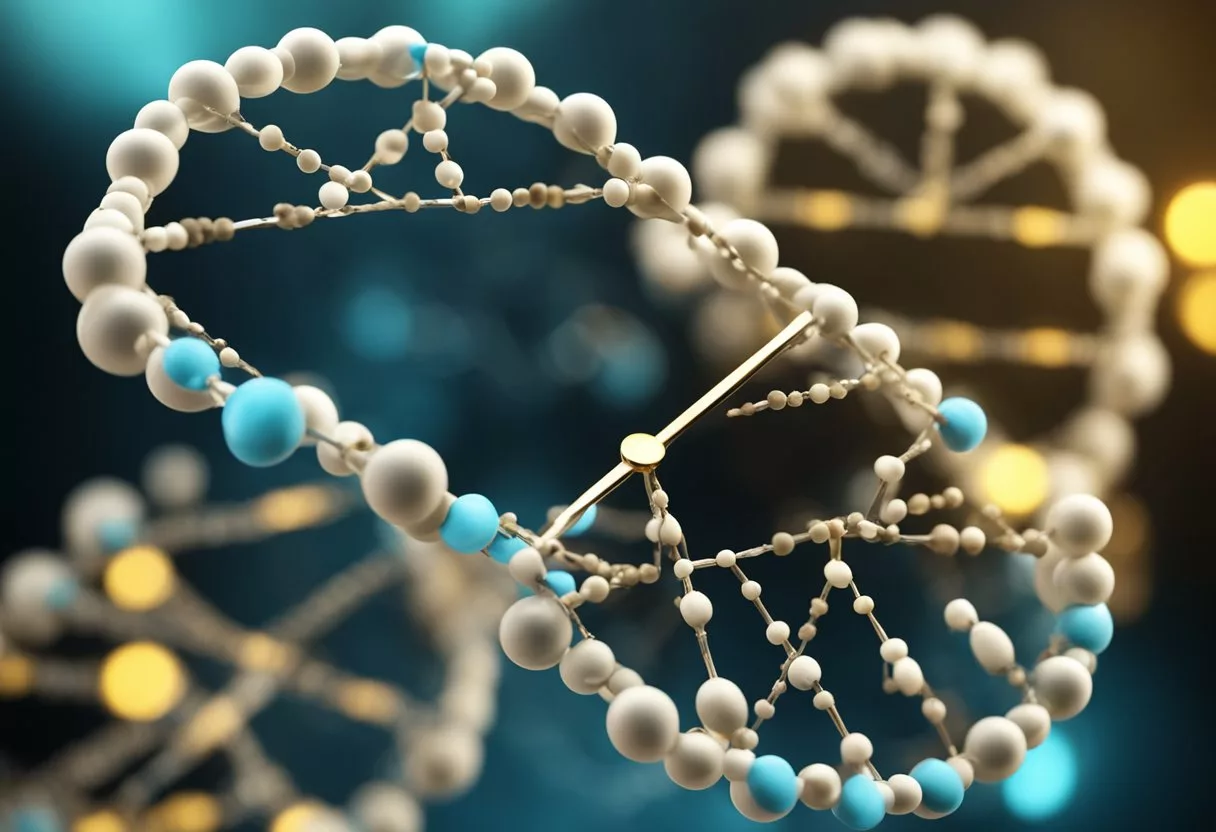
Understanding the relationship between methylation and aging is key to unlocking potential interventions in age-related health issues and accurately measuring biological age.
How do changes in DNA methylation influence the aging process?
Alterations in DNA methylation patterns are significant contributors to the aging process. They affect gene expression and cellular function, potentially leading to age-related diseases.
What is the role of DNA methylation clocks in measuring biological age?
DNA methylation clocks serve as biomarkers to assess biological age by examining methylation changes at specific sites in the genome. This reflects the physiological state of an individual rather than just chronological age.
How does the accuracy of DNA methylation age tests compare with other biomarkers of aging?
Tests based on DNA methylation age often provide more precise estimations of biological age and healthspan compared to other biomarkers. They have been shown to predict mortality risks and age-related health outcomes with high accuracy.
Can alterations in methylation patterns be used as reliable biomarkers for aging?
Changes in methylation patterns are robust biomarkers for aging. They can reflect an individual’s biological age with considerable reliability and are indicative of their overall health and longevity.
What potential interventions exist to modify methylation for age-related health benefits?
Research suggests lifestyle changes, such as diet and exercise, and pharmaceutical interventions may influence methylation patterns. This offers an avenue to potentially decelerate the aging process and improve age-related health outcomes.
In what ways does DNA methylation affect overall bodily functions during aging?
DNA methylation impacts cellular aging and systemic aging. It does this by regulating the expression of age-related genes and maintaining genomic stability. This plays a crucial role in the functional decline associated with aging.
